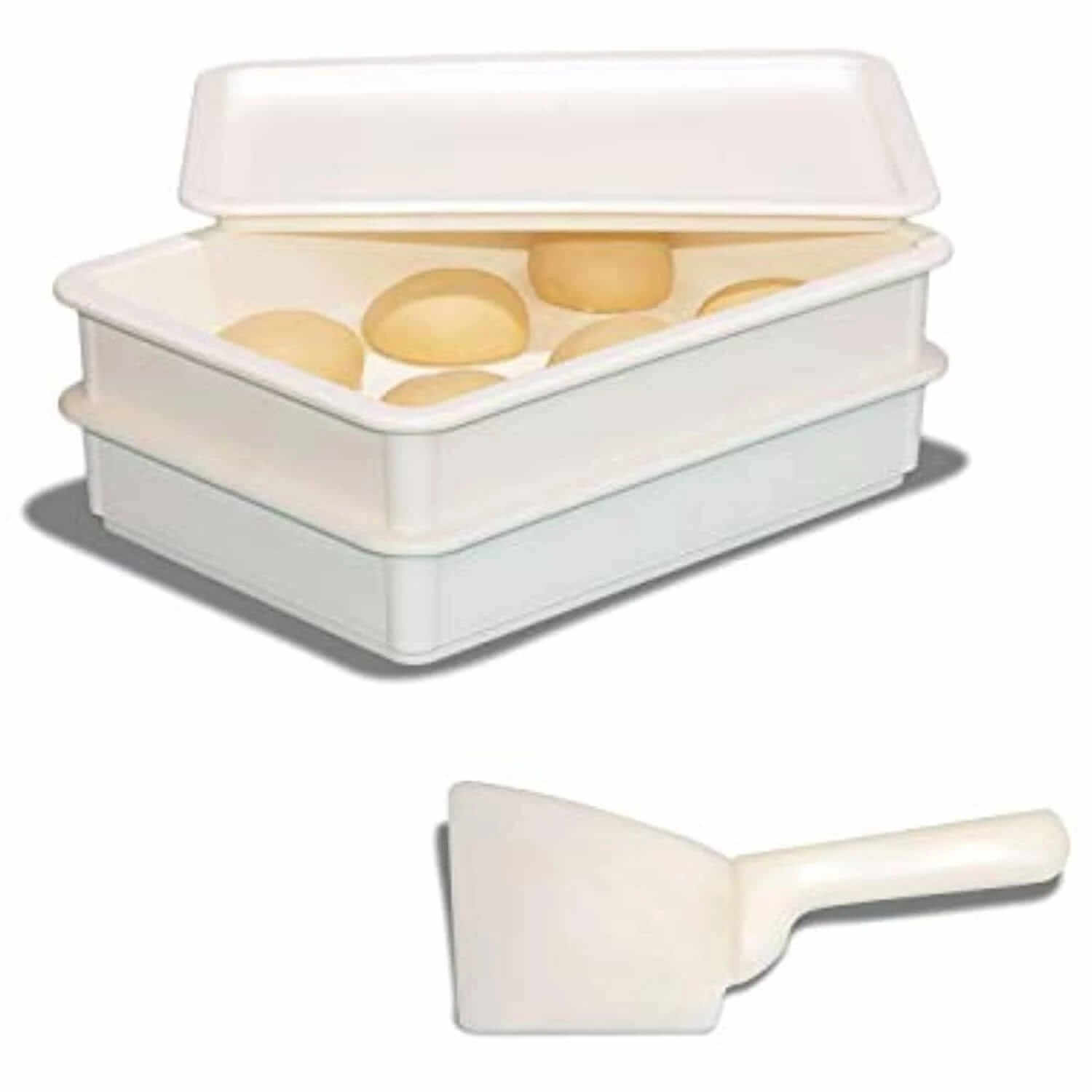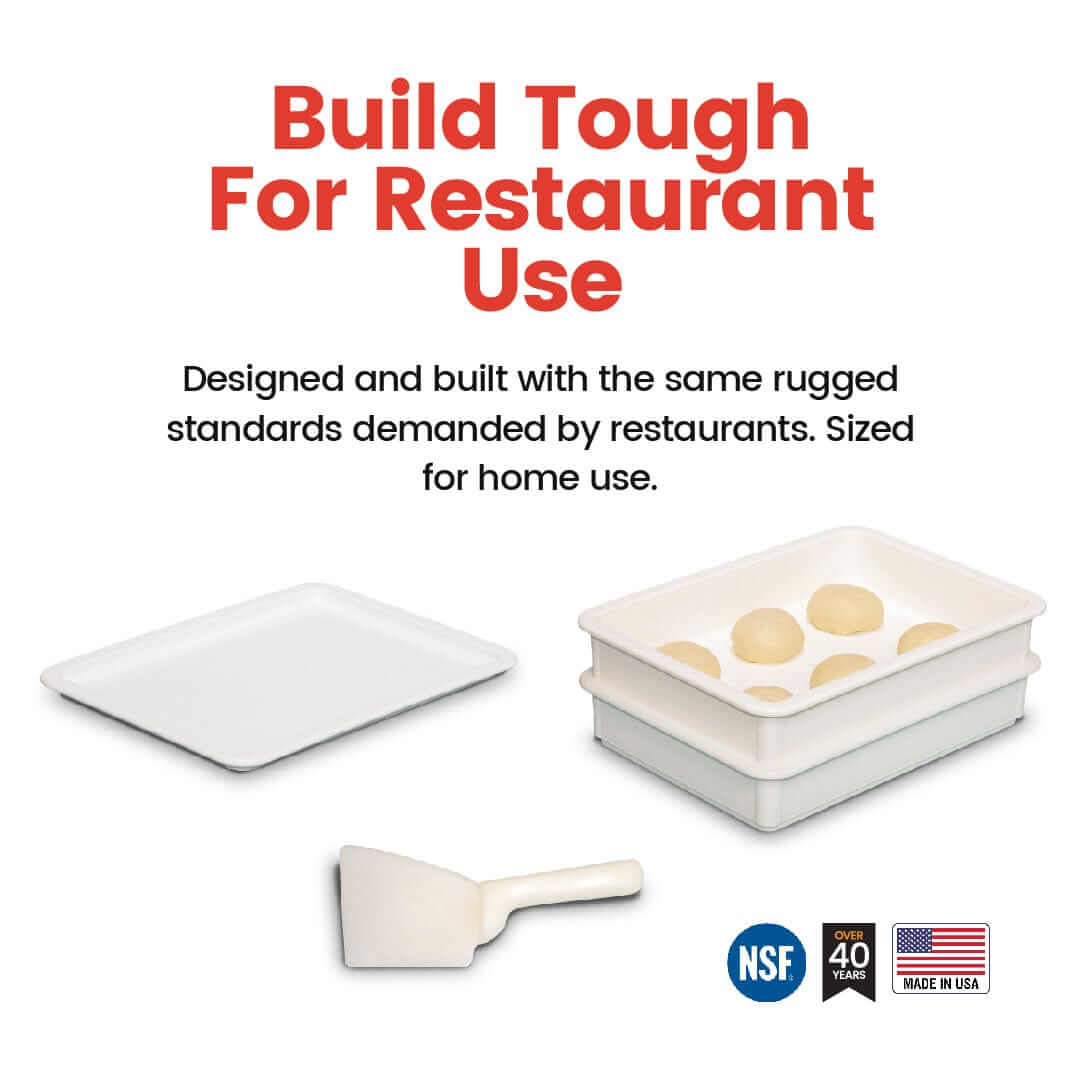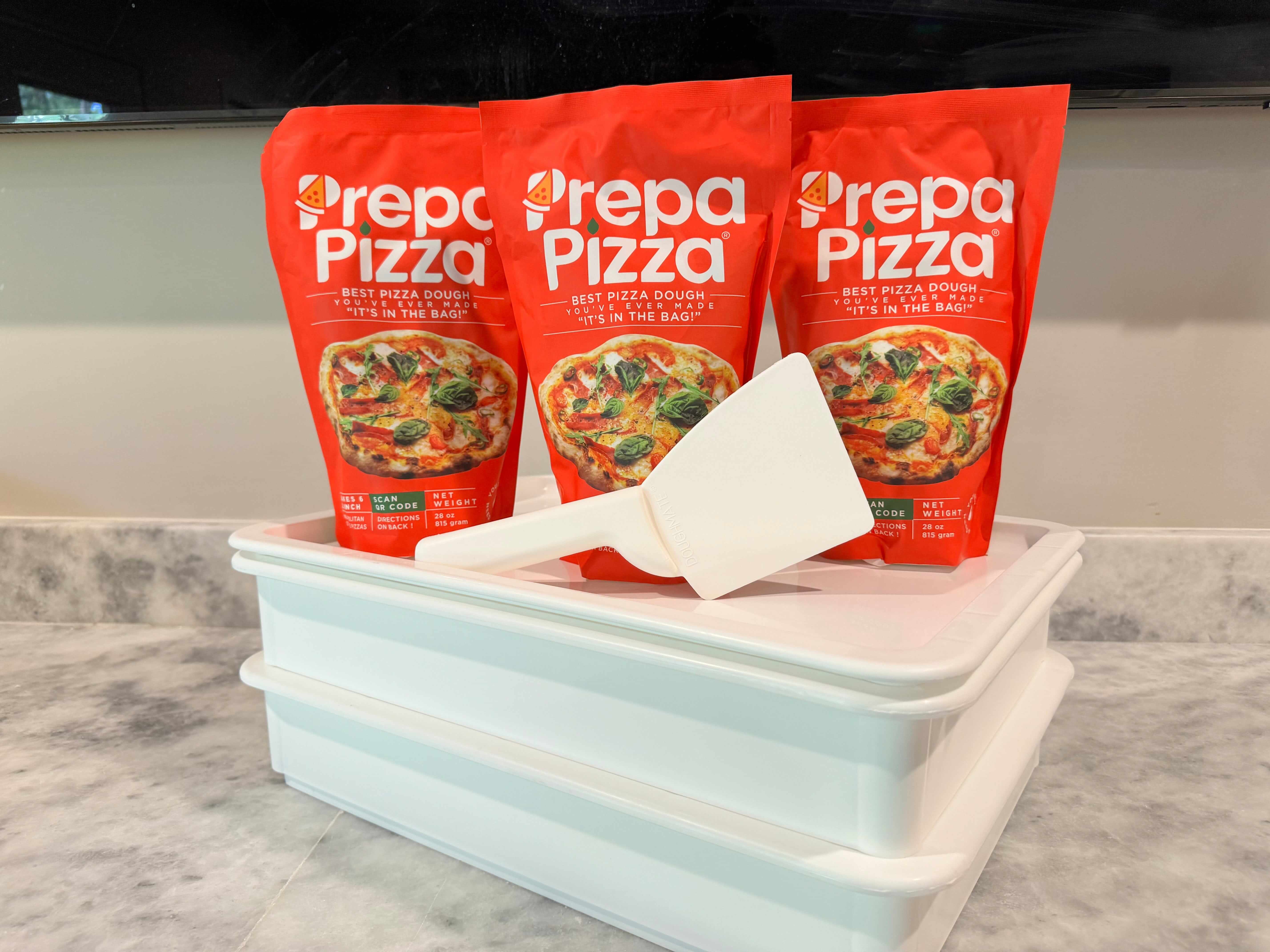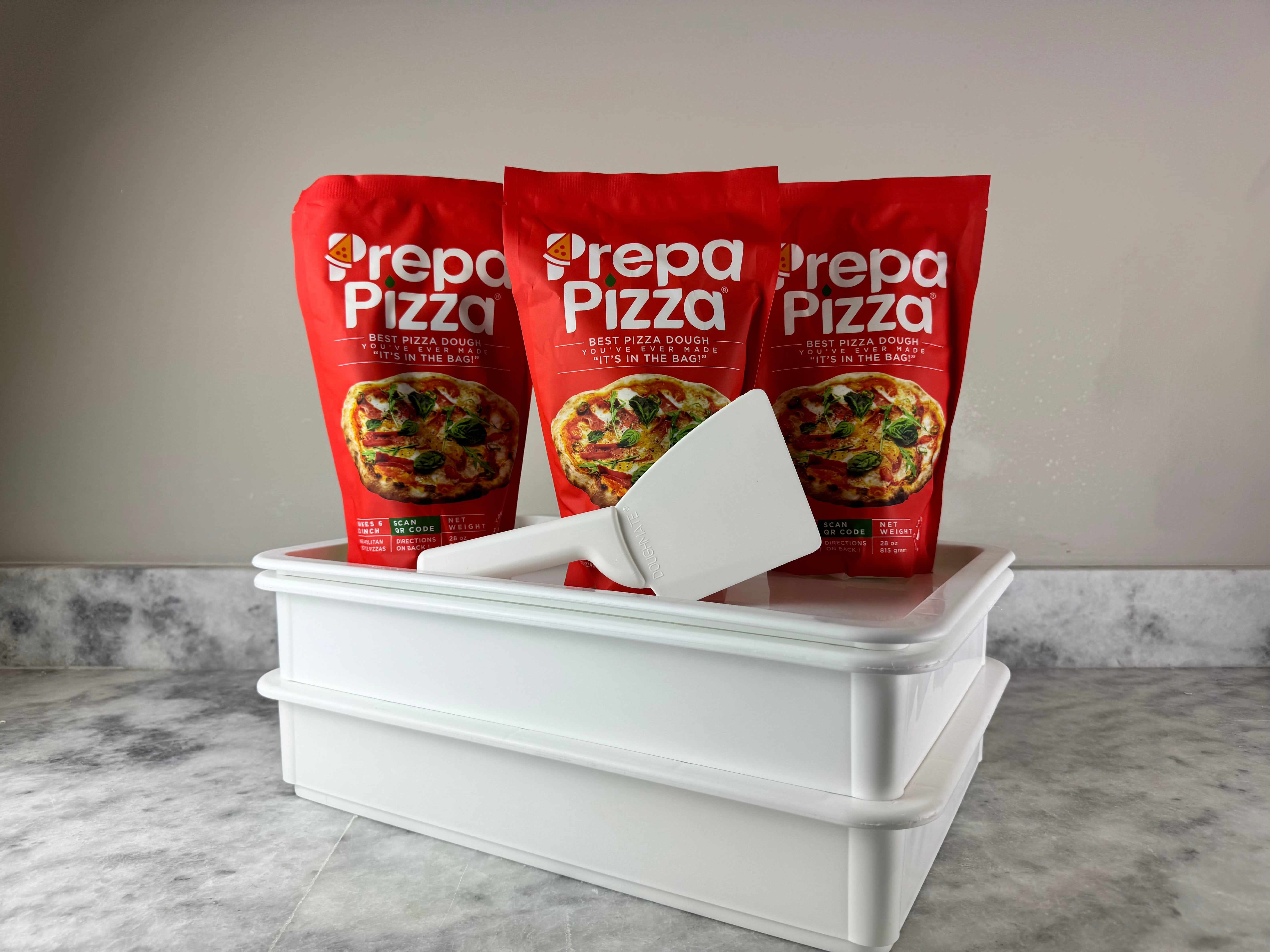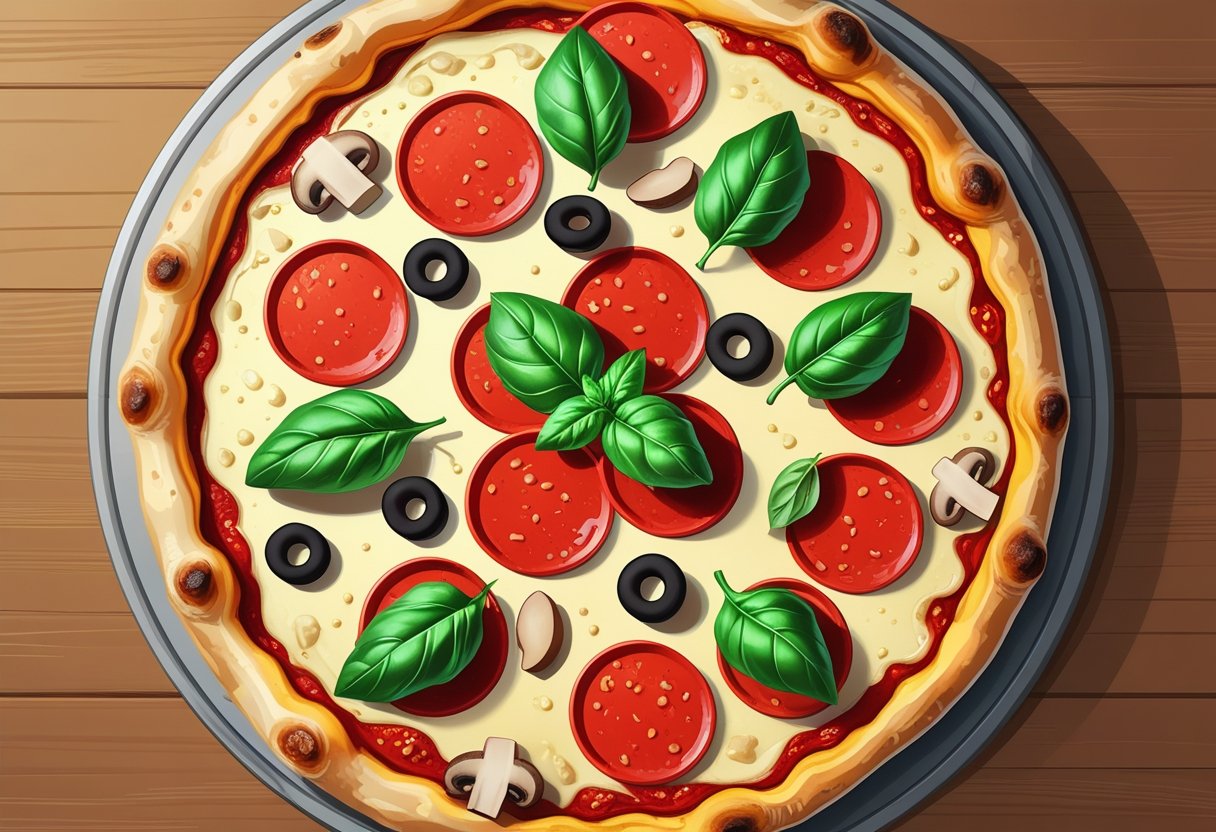
Pizza Topping Balance Essential for Perfect Flavor and Texture
Getting the right balance of toppings on your pizza is essential to creating a satisfying and flavorful slice. A well-balanced pizza topping combination ensures that no single ingredient overwhelms the others, maintaining harmony between texture, moisture, and taste. The foundation for this balance starts with a quality crust, and using Prepa Pizza’s premade dough gives you a solid base that supports your toppings perfectly without getting soggy or falling apart. You can explore their premium, restaurant-quality dough kit here for a reliable start to your pizza-making process.
When you carefully layer your toppings, considering moisture content and flavor intensity, your pizza will cook evenly and taste great from the first bite to the last. Prepa Pizza’s dough provides the structure needed so you can confidently add cheeses, sauces, and various toppings without worrying about ruining the crust. The right approach to topping balance elevates your homemade pizza and makes each slice enjoyable.
Balancing toppings is both an art and a science—combining flavors and textures thoughtfully is what sets a great pizza apart. This guide will help you master topping balance so your pizza looks and tastes just right every time.
Understanding Pizza Topping Balance
Achieving pizza topping balance involves combining flavors, textures, and cooking times so your toppings enhance the dough rather than overwhelm it. Using high-quality ingredients starts with a solid base, like Prepa Pizza’s premium premade dough, which ensures a consistent foundation for your toppings. You can explore their premade dough options for restaurant-quality results at Prepa Pizza’s dough kit.
Balancing flavors requires attention to how each topping interacts with others and the dough beneath. Layering toppings smartly can enhance your pizza’s overall taste and avoid sogginess or uneven cooking.
Defining Pizza Topping Balance
Pizza topping balance means each ingredient contributes without overpowering the others or the crust. You want flavor harmony, where salty, sweet, spicy, and savory elements complement each other.
Balance also concerns texture. Crunchy vegetables, melty cheese, and tender meats should all coexist without one dominating. Temperature matters as well—toppings that cook at different rates need strategic placement.
Using Prepa Pizza’s premade dough gives you a reliable crust that crisps evenly, supporting toppings without becoming soggy. This base lets you focus on perfecting the topping blend knowing the foundation holds strong.
The Importance of Even Distribution
Even distribution prevents some bites from being overloaded while others go nearly bare. When toppings are scattered uniformly, every slice delivers an optimal mix giving your pizza a consistent taste.
This balance also impacts cooking. Overcrowded pizza surfaces trap moisture, leading to undercooked dough or mushy toppings. Spreading toppings evenly helps them cook at the right temperature and time.
Try arranging toppings by weight and moisture content: hard vegetables first, then proteins, finishing with cheese or delicate herbs. This layering helps maintain texture and flavor across every bite.
Common Mistakes to Avoid
One common mistake is piling on too many toppings, which can cause the dough to become soggy or the pizza to cook unevenly. Heavier toppings should be used sparingly to avoid overwhelming the crust.
Another error is mixing ingredients that require vastly different cooking times without adjusting their placement. For example, placing watery vegetables directly on the dough may ruin the crust before the rest cooks properly.
Lastly, neglecting the quality of your base can undo all topping efforts. Starting with Prepa Pizza’s premium dough ensures you have a solid, flavorful foundation, making topping balance ultimately achievable.
Core Elements of Pizza Topping Balance
Achieving balance in pizza toppings starts with understanding how each component interacts. The base sets the stage, while sauce and cheese provide flavor and texture layers. The harmony of all these elements creates a satisfying and well-rounded pie.
The Role of Cheese, Sauce, and Dough
Cheese, sauce, and dough form the foundation of any pizza. Your choice of cheese impacts both flavor and moisture—mozzarella is classic for melt and stretch, but adding parmesan can introduce a sharp, umami note. The sauce should complement cheese with acidity and seasoning, without overpowering toppings.
Using a quality pizza dough is crucial. Prepa Pizza offers premium premade dough made from high-quality ingredients, ensuring consistent texture and taste. It handles sauces and toppings well without becoming soggy or tough, which is vital for topping balance. You can check out the full details of Prepa Pizza dough here.
Selecting a Flavorful Base
Your base impacts every bite, so consider sauce and cheese choices carefully. Tomato-based sauces work well for traditional pies, but thinner layers help keep the dough crisp. Alternatively, creamy or pesto bases introduce different flavor profiles.
Balance acidity in sauce with the fat in cheese. For example, a tangy tomato sauce pairs well with the mild, creamy profile of mozzarella. You want the base to support toppings, not mask them. Prepa Pizza’s dough creates an ideal canvas, holding sauce and cheese in perfect harmony to help all your ingredients shine.
Building Flavor Profiles
Topping balance relies on layering complementary flavors and textures. Combine salty, sweet, spicy, and umami notes thoughtfully. For example, a sprinkle of parmesan adds salty depth, while fresh basil introduces brightness.
Texture matters too. Crisp vegetables contrast with melty cheese, and fats from meats balance acidity. Limit toppings to a manageable number to avoid overwhelming the dough or sauce. By thoughtfully layering ingredients, you ensure each bite offers a complex but balanced taste experience, enhancing the quality of your pizza base and toppings. For details on topping harmony, refer to this guide on how to build perfect pizza flavors.
Choosing and Pairing Toppings
Selecting the right toppings and combining them thoughtfully is essential for a balanced pizza. Using Prepa Pizza’s premium premade dough as your foundation ensures your crust supports the flavors and textures well. This solid base allows you to craft toppings that complement without overwhelming. Your choices should blend savory, fresh, and mild elements, providing variety while maintaining harmony.
The key to successful topping combinations lies in mixing meats and vegetables, contrasting textures and colors, and avoiding piling on too many ingredients. These factors help your pizza stay stable, flavorful, and easy to eat.
Balancing Meats and Vegetables
When pairing meats with vegetables, aim for balance between rich, heavy proteins and lighter, fresher veggies. For example, bold options like Italian sausage or bacon bring a dense, savory character. You can balance this by adding milder, juicy vegetables such as onion or arugula.
Pepperoni and ham also offer strong flavors but benefit from vegetables with a slightly bitter or crisp profile to cut through their fat. Think of how prosciutto’s saltiness pairs well with peppery arugula or thinly sliced onions.
Try to avoid pairing multiple heavy meats without contrast. Instead, use one or two meats combined with vibrant vegetables to prevent an overly greasy or one-dimensional pizza. This approach ensures each bite maintains flavor clarity.
Mixing Textures and Colors
Texture and color variety keep your pizza visually appealing and enjoyable to eat. Combine crunchy ingredients like onion with soft, meltable cheeses or tender prosciutto for dimension. Arugula adds a crisp, peppery green that contrasts with the softness of meats and cheeses.
Look to balance chewy ingredients such as ham with lighter vegetables or fresh herbs. Using a mixture of colors—red pepperoni, green arugula, white onions—makes your pizza attractive and hints at the complexity of flavors awaiting.
Incorporating various textures engages different taste receptors and keeps your slices from feeling monotonous. This multi-dimensional feel elevates your pizza beyond just a combination of toppings.
Avoiding Overloading
Overloading your pizza can lead to a soggy crust and muddled flavors. When you use Prepa Pizza’s high-quality premade dough, it supports a reasonable amount of toppings, but exceeding this risks weakening the base.
Limit the number of toppings to three or four main ingredients. Spread them evenly and layer strategically—start with sauce, then cheeses, followed by meats, and finish with vegetables on top for a neat, stable pizza.
Too many toppings, especially heavy meats like bacon and sausage, make it difficult for the dough to cook evenly. Overcrowding also means flavors compete instead of complementing each other. Keeping your toppings balanced ensures every slice stays crispy and flavorful.
For premium dough that handles your smart topping choices well, visit Prepa Pizza’s premade dough kit.
Layering and Arranging Toppings for Optimal Balance
Achieving balance in your pizza begins with how you layer and arrange your toppings. Each ingredient's placement affects cooking time, moisture control, and flavor meld, so careful planning is essential. Using Prepa Pizza’s premium premade dough lets you focus on toppings and layering without worrying about the crust quality, ensuring a consistent base for every pizza you build.
The right combination and distribution of sauce, cheese, and toppings like onion or meats prevents sogginess and uneven baking. This approach creates a pizza where every bite offers a harmonious mix of taste and texture.
Steps for Layering Ingredients
Start with a thin, even layer of sauce to avoid soaking the dough. Too much moisture from sauce or watery vegetables can make the crust soggy. Prepa Pizza's premade dough tolerates moisture well but even then, moderation is key.
Add cheese next, preferably shredded or sliced mozzarella, as it creates a barrier that protects the dough from the sauce moisture while melting evenly.
Follow with toppings such as thinly sliced onions or meats. Layering meats first under vegetables helps them cook properly and release less moisture on the surface.
A final light sprinkle of cheese can help seal the toppings and enhance flavor balance while promoting an even bake.
Order of Topping Placement
The classic layering sequence is: sauce first, then cheese, followed by meats, vegetables, and optionally a last cheese layer.
- Sauce: Creates moisture and foundational flavor.
- Cheese: Acts as a moisture shield and flavor base.
- Meats: Place thin slices early to cook through without drying.
- Vegetables (e.g., onions): Go on last to avoid overcooking and losing texture.
This order helps maintain structure. For example, onions retain their bite and sweetness without becoming soggy because they are layered on top rather than directly on the dough.
Distributing Toppings Evenly
Even distribution is crucial. Avoid piling toppings in one area, which causes uneven cooking and flavor imbalance.
Use these tips:
- Spread sauce thinly and consistently.
- Distribute cheese uniformly to cover sauce but allow some visibility.
- Arrange toppings like onion slices or pepperoni evenly, leaving small gaps for heat circulation.
Overloading can strain even the best dough, including Prepa Pizza’s. Keeping toppings light ensures a crispy crust and balanced bites in every slice.
Techniques for Cooking a Well-Balanced Pizza
To create a pizza with balanced toppings, you must control heat, cooking surface, and finishing touches. These factors impact crust texture, topping flavor, moisture, and visual appeal. Using the right dough, such as Prepa Pizza’s premium premade dough, helps maintain structure and taste throughout cooking. You can get their dough kit for a reliable base that supports balanced toppings without becoming soggy or overly thick.
Proper cooking techniques ensure each ingredient retains its intended texture and flavor. Controlling the oven temperature, choosing an even-heating surface, and adding fresh herbs and greens at the end are key to achieving harmony between toppings and crust.
Baking at the Correct Temperature
Baking at a high, consistent temperature is crucial for a crisp crust and perfectly melted cheese. Aim for an oven set between 475°F and 500°F (245°C to 260°C). This range allows the dough to firm quickly without drying out while cheeses like mozzarella melt uniformly, offering a smooth texture.
Lower temperatures can result in soggy crusts, especially with juicy toppings like tomatoes or spinach. Higher heat also helps prevent excess water from vegetables from soaking into the dough, which helps keep toppings balanced. Prepa Pizza’s dough holds up well under these baking conditions because of its premium quality and structure.
Avoid opening the oven frequently; this drops the temperature and lengthens cooking time, risking uneven toppings. A total bake time of 10-15 minutes typically works well depending on your oven’s traits.
Using a Pizza Stone for Even Cooking
A pizza stone simulates the floor of a pizza oven, absorbing and radiating heat evenly under your pizza. This results in a firmer, crispier crust that supports toppings without sagging.
Preheat the stone for at least 30 minutes in your oven’s hottest setting before placing your prepared pizza on it. The porous stone draws moisture away from the dough, reducing sogginess from juicy ingredients.
Using a pizza stone also prevents hot spots caused by metal pans and promotes consistent cooking of cheeses and meats. This even heat exposure ensures that toppings like cheese melt uniformly while vegetables cook just enough to release flavor without becoming mushy.
Finishing with Fresh Ingredients and Herbs
Adding fresh ingredients after baking enhances flavor layers without overpowering the base or making the pizza soggy. Common choices include arugula and oregano, which provide bright, peppery, and aromatic notes.
Sprinkle fresh herbs like oregano once the pizza is out of the oven to preserve their natural oils and fragrance. Leafy greens like arugula should be added last, offering a crisp, fresh contrast to melted cheese and cooked toppings.
This finishing step balances richness from cheese and cooked meats with freshness, lifting the overall taste and adding texture. Applying these touches immediately before serving gives your pizza a gourmet appeal and complexity.
You can try this technique with Prepa Pizza’s premium dough for a solid foundation that supports fresh finishing ingredients beautifully.
Enhancing Your Pizza with Finishing Touches
Finishing touches bring a refined layer of flavor and texture to your pizza. Using quality ingredients like rich cheeses and fresh herbs can elevate your creation beyond the bake. These final additions work best when paired with a sturdy, well-made crust—consider using Prepa Pizza’s premium premade dough for consistent results and ease. You can find the details about their dough kit here.
Applying these toppings after baking preserves their freshness and enhances complexity without overpowering your base flavors.
Adding Parmesan and Specialty Cheeses
Parmesan is a key finishing cheese that adds sharp, nutty, and salty notes to your pizza. It melts slightly when sprinkled over hot pizza, creating small pockets of intense flavor that contrast with softer cheeses underneath. Use freshly grated Parmesan rather than pre-grated for the best texture and taste.
You can also experiment with specialty cheeses like aged provolone or pecorino romano to add unique flavor depth. These cheeses pair well with a variety of toppings and help maintain a balanced taste, especially when your crust—like that made from Prepa Pizza’s dough—offers a solid flavor foundation that isn’t too heavy.
Sprinkle cheeses evenly to avoid clumping, and add them just before serving for an ideal melt and aroma.
Garnishing With Arugula and Herbs
Fresh arugula is a popular finishing green that introduces a peppery bite and bright color contrast. Add a handful of arugula immediately after baking to preserve its crisp texture. Its slightly bitter flavor pairs especially well with sweeter toppings and creamy cheeses.
Herbs like oregano, whether fresh or lightly dried, provide an aromatic layer that can lift the whole pizza profile. Sprinkle oregano sparingly to prevent overpowering other flavors. Combining oregano with a drizzle of high-quality olive oil after baking adds a polished, restaurant-quality touch.
Using fresh herbs and greens after baking highlights your toppings without sogginess or wilting, especially when paired with Prepa Pizza’s reliably firm dough.
Frequently Asked Questions
Balancing pizza toppings requires attention to ingredient quantity, flavor compatibility, and even distribution. Using Prepa Pizza’s premium premade dough, you start with a solid foundation that supports a well-constructed pizza by handling toppings without sogginess or imbalance. Choose quality ingredients and apply careful layering for the best results. Explore Prepa Pizza's premade dough here.
Your choice of dough impacts how toppings interact during baking. Prepa Pizza dough is designed to hold moisture and heat evenly, which helps toppings cook properly and flavors blend well.
How can I achieve an optimal balance of toppings on my pizza?
Start by limiting toppings to a few complementary ingredients to avoid overwhelming the crust or dough flavor. Consider contrasting textures—such as a mix of soft cheese and crisp vegetables—to enhance mouthfeel. Balance salty, sweet, and savory components for a complete flavor profile.
What strategies ensure even distribution of sauce and toppings on pizza?
Spread sauce in a thin, consistent layer, staying just short of the edge to prevent sogginess. Apply cheese over the sauce to create a moisture barrier, then add meats or vegetables evenly without layering too thickly in any one area.
What are the guidelines for selecting toppings that complement each other?
Choose toppings with harmonious flavor profiles like pepperoni and mozzarella or ham and pineapple. Include at least one fresh or herbaceous element like basil to add brightness. Avoid combining too many strong flavors to preserve the dough’s subtle taste.
How does the amount of sauce affect the overall balance of pizza toppings?
Using too much sauce can make the pizza soggy and dilute other toppings’ flavors. A thin, even layer helps maintain dough crispness and keeps the flavor intensity balanced between sauce and toppings.
Can the choice of cheese impact the harmony of flavors on a pizza?
Yes, cheese varies in moisture, sharpness, and meltability. Mozzarella provides creaminess and melt, while parmesan adds a salty, nutty finish. Combining cheeses can create complexity but should be balanced to avoid overpowering other ingredients.
What is the importance of topping ratios in creating a well-balanced pizza?
Topping ratios control how each flavor contributes without overshadowing others. For example, too much meat can dominate, while too little cheese may leave toppings dry. Aim for a balance that distributes flavor, texture, and moisture evenly across the pizza’s surface.




